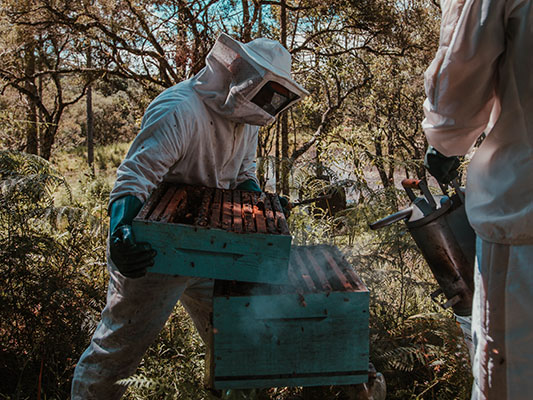The Australian Honey Bee Industry Biosecurity Code of Practice recommends the implementation of a barrier system that divides the apiary into one or more isolated sub-units and restricts movement of hives and hive components between these sub-units.
The use of a barrier management system will reduce the risk of spreading pests and diseases amongst your colonies. It will not remove the need to inspect your colonies for disease.
Barrier management can take place at any level of operation; from the hive, to the pallet, or even to the apiary/load.
At the hive level each hive is its own unit, combs from that colony are never exchanged with combs from another colony. While being more effective for disease control, it is also more logistically difficult, requiring the individual hive and the frames belonging to that hive to be branded with a hive identifier.
At the apiary level, hive components from any hive within an apiary can be interchanged. This is more easily achievable. An apiary unit may be identified with branding or coloured paint.
Record keeping will enable traceability of affected colonies; if, for example, American Foulbrood is identified in a load of honey, good record keeping and an effective barrier management system will allow much faster identification of the suspect colonies.
For examples of how other beekeepers implement barrier management systems, please see the AgriFutures report. You can share your own stories in the Barrier Management Systems group on our Facebook Page.
Videos:
The Barrier Management System – a best practice video from the Honey Bee & Pollination Program, AgriFutures Australia
David Mumford, president of the NSW Riverina branch tells us why he implemented a barrier management system to his operations.
Acknowledgements:
Goodman (2001) Honeybee disease barrier management systems. Rural Industries Research and Development Corporation, Publication 01/052, Canberra ACT, Australia
About the author Nadine Chapman


